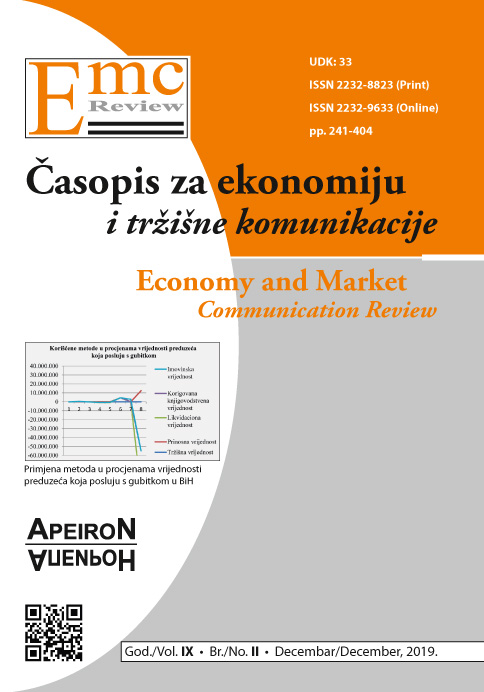RESEARCH OF THE TECHNICAL AND FUNCTIONAL DIMENSION TO THE PERCEPTION OF TOTAL QUALITY OF SERVICES IN HEALTH / ISTRAŽIVANJE UTICAJA TEHNIČKE I FUNKCIONALNE DIMENZIJE NA PERCEPCIJU UKUPNOG KVALITETA USLUGA U ZDRAVSTVU
DOI:
https://doi.org/10.7251/EMC1902311HAbstract
The study subject of this paper is to examine and measure the difference in the level of perception and expectation of the technical and functional dimension of the quality of services of different groups of patients in order to determine the importance of the perceived level of quality of health services and the impact of expectations on the level of perceived quality. The study was conducted at the University Clinical Center Tuzla with the applied sample, which has the characteristic of a suitable sample, since the selected patients are on active treatment. Of the total number of respondents, 28.95% were men and 71.05% were women, aged 25 to 76 years, 58 or 69.00% are with high school graduation, 14 or 16.70% with high school graduation and 12 or 14.34% with primary school education.
The paper presents the results of research conducted among health care users and the measurement of the impact of their previous expectations on the perception of the overall quality of different types of services using a weighted SERVQUAL model based on the difference between perceived and expected quality. It should be emphasized that the selected model measures five standard and original SERVQUAL dimensions: tangibility, reliability, friendliness, security and empathy. The choice of model is due to the fact that the weighted SERVQUAL model has been used in previous studies of quality and perception levels, where multiple studies have shown that there are differences in patient expectation levels.
Test results confirm that there is a difference in patients’ perceptions and expectations regarding the functional dimension of services between rehabilitation and surgery services, which partly confirms our claim that patients’ expectations and perceptions differ depending on the type of service and the fact that services are provided within rehabilitation and/or surgical branches. At the same time, the test results indicate that patients do not have the knowledge to evaluate the individual sub-dimensions of the technical dimension of service quality and form an opinion on the quality of the health care process based on the sub-dimensions of the functional dimension of quality, that is, non-technical dimensions of quality.
However, the situation in the overall gap analysis is more favorable after the inclusion of weights, which means that the mismatches between perception and expectations are generally far greater in those sub-dimensions of the services to which patients attach the greatest importance. This confirms the fact that, in addition to the perception of individual dimensions, sub-dimensions must include user priorities in the analysis of the perception of quality.
